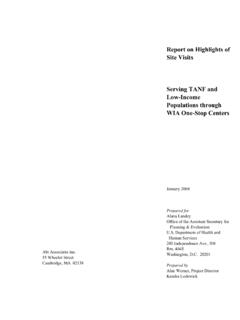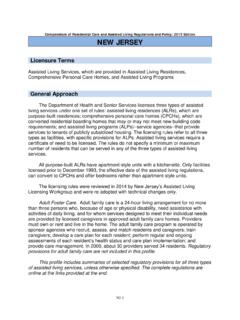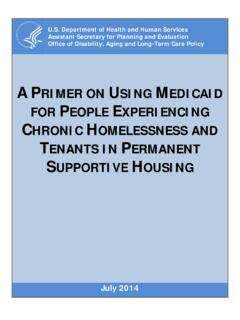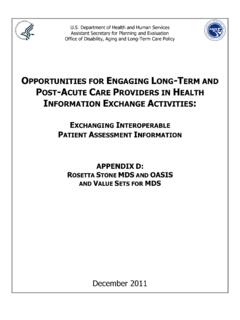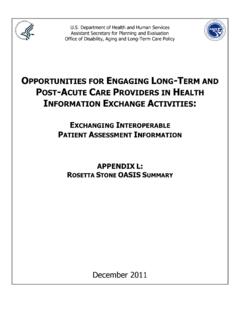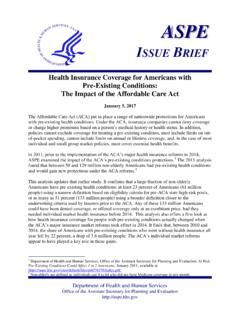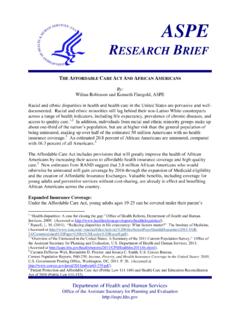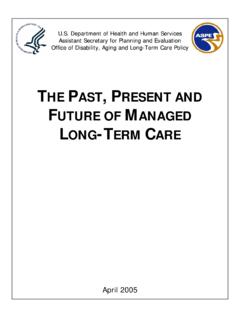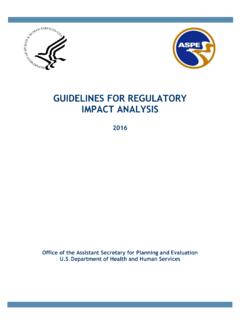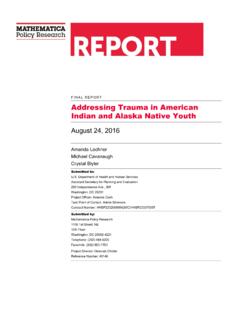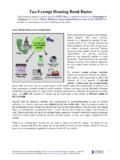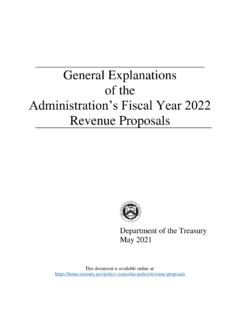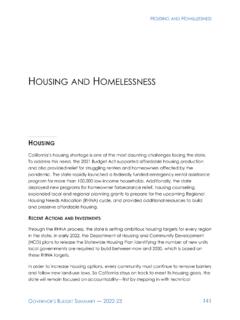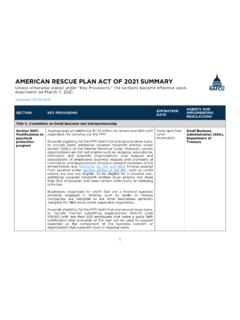Transcription of Poverty in the United States: 50-Year Trends and Safety ...
1 Poverty in the United States: 50-Year Trends and Safety Net Impacts March 2016. By Ajay Chaudry, Christopher Wimer, Suzanne Macartney, Lauren Frohlich, Colin Campbell, Kendall Swenson, Don Oellerich, and Susan Hauan Office of Human Services Policy Office of the Assistant Secretary for Planning and Evaluation Department of Health and Human Services Table of Contents Executive 1. The War on Poverty .. 1. Key Trends in Reducing Poverty and Economic Deprivation .. 2. Safety Net Programs Alleviate Poverty .
2 3. Economic Context and Challenges .. 4. The Economic Circumstances of Key Population Groups .. 6. Clear Progress Made, Further Efforts Needed .. 7. Part I: 50-Year Poverty Levels and Trends .. 8. Poverty Fluctuates with Economic 8. Spotlight on Safety Net Expenditures Over Time .. 10. Part II: Impact of the Safety Net on Poverty .. 12. Historical Trend: The Safety Net Reduces Poverty .. 12. Safety Net Programs Reduce Overall Poverty Rate .. 14. Larger Poverty Rate Impact Among Program Recipients .. 17.
3 Spotlight on Deep Poverty .. 19. Part III: Poverty Trends for Vulnerable Populations .. 23. Poverty through the Lens of Women, Families, and Children .. 23. Single-Mother Families Increase, Poverty Declining but High .. 24. Higher Poverty Rate for Blacks and Hispanics .. 26. Poverty Rates by Human Capital: Education and Employment .. 28. Education-Driven Poverty Gap Is 28. Poverty and Employment .. 31. Employment Is Declining for Black Men with Less Education .. 33. The Geography of Poverty .. 34. Poverty Is Becoming Less Concentrated in 34.
4 Poverty Remains High in South, Increases in West .. 36. 37. Reducing Poverty Improves Child Development and Subsequent Outcomes .. 38. Job- and Skills-Driven Training Get Results .. 38. Poverty of Place Matters .. 39. The Next 50 Years .. 39. Appendix A: Program Source Data .. 40. Appendix B: How is Poverty Measured? .. 41. Official Poverty Measure .. 41. Supplemental Poverty Measure .. 42. Alternative Poverty Measure .. 43. Endnotes .. 44. Executive Summary The War on Poverty Just over 50 years ago, President Lyndon B.
5 Johnson declared an unconditional war on Poverty , and signed the Economic Opportunity Act of 1964 and the Civil Rights Act of 1964 into law. The initiatives undertaken as part of the War on Poverty were designed to improve the education, skills, health, and resources of low- income individuals and families to help them expand their productivity and ability to make ends meet and enhance their lifelong economic outcomes. Many cornerstones of the modern-day social Safety net ( , food stamps, later renamed the Supplemental Nutrition Assistance Program [SNAP], Community Health Centers, Head Start) were first established in 1964.
6 The additional building blocks of Medicaid, Medicare, and Title I of the Elementary and Secondary Education Act followed in 1965, among many new and expanded anti- Poverty programs. Building on this foundation, the Safety net has expanded during the past 50 years to further alleviate Poverty and better meet the needs of low- income individuals and families. Some of the major additions to the Safety net included the Supplemental Security income (SSI) program in 1972, the Women, Infants, and Children (WIC) nutrition program in 1972, Pell Grants in 1972, the Earned income tax credit (EITC).
7 In 1975, the child support program in 1975, the Low income Home Energy Assistance Program (LIHEAP). in 1981, the Children's Health Insurance Program (CHIP) in 1997, Medicare Part D (Low income Subsidy). in 2003, and the Affordable Care Act (ACA) in 2010. This report provides a statistical portrait of progress in the reduction of Poverty and economic hardship over the past five decades among America's most vulnerable citizens. The Poverty measures presented in this volume show that the federal Safety net has advanced the economic circumstances of low- income children and families since 1964.
8 Three key metrics assess whether families were able to secure resources to meet their basic human needs and avoid severe material deprivation: 1) Official Poverty measure. Developed by Mollie Orshansky in 1963-1964 and designated as the federal government's official statistical definition of Poverty in The initial measure determined levels of basic need, which have been updated only for inflation. The measure accounts for the cash resources available to meet needs, but does not include non-cash benefits.
9 In the 1960s, the federal social Safety net was much smaller than today and consisted largely of cash benefit programs, most notably the Aid to Families with Dependent Children (AFDC) program. 2) Supplemental Poverty measure. First released by the Census Bureau for 2009, it offers a modern measurement of family needs and includes tax credits and noncash benefits as available Unlike the official Poverty measure which is updated only for inflation, the supplemental measure is updated as spending on basic necessities among lower income families changes.
10 The supplemental Poverty measure allows for an analysis of the current impact of the full array of government policies and programs on Poverty rates in recent years. 1. 3) Alternative Poverty measure. Recently developed by researchers at Columbia University, it extends the supplemental Poverty measure back decades and fills the critical gap in knowledge necessary to evaluate the impact of the full federal Safety net prior to Drawing on the supplemental Poverty measure, the alternative Poverty measure in this report takes the cost of basic necessities at 2012 spending levels, and applies these spending levels to each year between 1967 and 2012, adjusting only for inflation.
